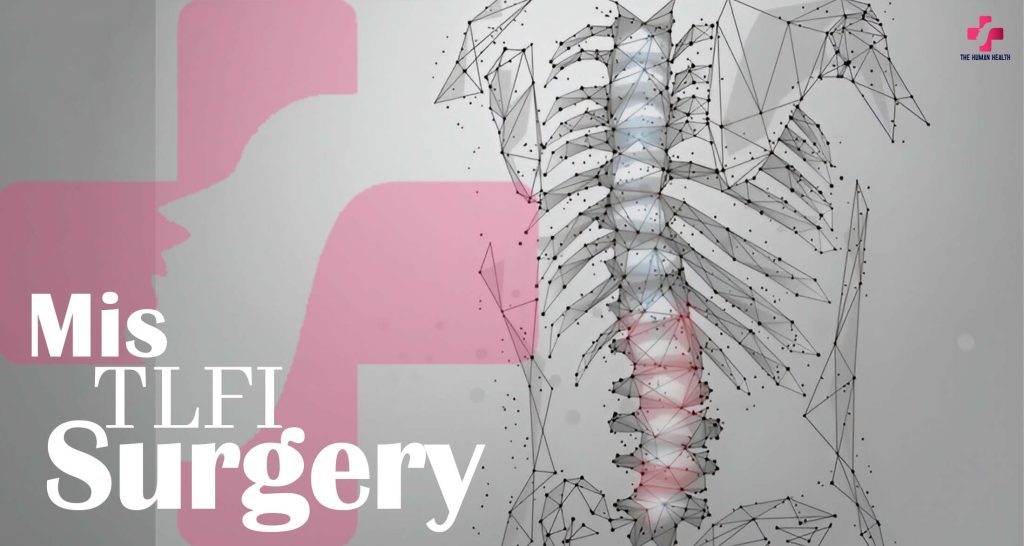Introduction
Back pain can make simple things—like playing with your kids or going for a walk—feel impossible. If your doctor mentioned MIS TLIF surgery, you might feel worried.
That’s okay! I know how it feels to search for answers and wonder if TLIF spine surgery is right for you. The good news?
This minimally invasive surgery helps many people move better and feel less pain. In this guide, I’ll explain it all in simple terms so you can feel confident about your next steps. Let’s get started!
What Is TLIF Surgery?
Think of your spine like a tower of blocks. If one shifts or wears down, it can cause pain. TLIF surgery helps by fusing two bones in your spine. Doctors place a small spinal cage between them to keep them steady and help new bone grow.
There are two types: traditional TLIF surgery and MIS TLIF surgery (Minimally Invasive TLIF). The difference? Traditional surgery needs a big cut and affects more muscle, so healing takes longer. MIS TLIF surgery uses tiny cuts and special tools, meaning less pain and a quicker recovery.
During surgery, you may lie on your stomach or slightly tilted. The position helps doctors work on your spine. No matter the method, the goal is the same—less pain and better movement!
Who Needs MIS TLIF Surgery?
Not all back pain needs surgery. But if your pain won’t go away and keeps you from doing the things you love, MIS TLIF surgery might help.
Doctors often recommend TLIF spine surgery for conditions like degenerative disc disease or spondylolisthesis—when the spine shifts out of place. If you have TLIF surgery L4-L5 or L5-S1, it means the issue is in your lower back, where movement and stress are the greatest.
When therapy, pain meds, and injections no longer work, surgery may be the next step. The goal? Less pain, better movement, and getting your life back!

TLIF Surgery Steps: What Happens During the Procedure?
Let’s talk about what happens during your MIS TLIF surgery. I know it can sound a little scary, but don’t worry—we’ll go through everything step by step to help you feel more comfortable.
First, the surgeon makes tiny cuts in your back. These are much smaller than the cuts made during traditional TLIF spine surgery. This is one of the best things about MIS TLIF surgery: it’s less invasive, which means less pain and faster healing
Once the incisions are made, the surgeon gently moves the muscles aside to reach the spine. They use advanced tools to make sure they’re in the right place, without causing damage. Think of it like using a GPS to find the exact spot.
Next, the surgeon places a spinal cage between the two bones in your spine that need to be fused. This cage keeps the bones in place and helps new bone grow between them. It’s like a little support beam inside your spine to help it stay strong as it heals.
The whole surgery usually takes 2 to 4 hours. While it might sound like a long time, the surgeon is focused on doing everything precisely to make sure the procedure goes well. The good news? Because this is a MIS TLIF surgery, you’ll recover faster than if you had traditional surgery.
Once the surgery is done, the surgeon closes the small cuts, and you start your healing journey. With MIS TLIF surgery, you’ll feel much less soreness afterward and can get back to your regular activities sooner.
In short, TLIF surgery steps are all about giving you long-term relief. The cage helps keep your spine stable, and the surgery is done with care to minimize pain. It’s a smart, modern procedure designed to get you feeling better, faster.
So, don’t worry about how long the surgery takes—it usually takes about 2-4 hours. It’s all about getting you back to living pain-free!
Recovery From TLIF Surgery: What to Expect
After your MIS TLIF surgery, it’s time to focus on your recovery. I know it can feel a bit overwhelming, but don’t worry! With a few helpful tips and a little patience, you’ll be back on your feet in no time.
Right after your surgery, you’ll stay in the hospital for a short time. This usually lasts a few days. During your stay, the doctors and nurses will help you manage pain and make sure you’re healing well.
At first, you’ll feel some soreness where the surgeon made the cuts. But since MIS TLIF surgery uses small cuts, you’ll likely have less pain compared to traditional surgery. You’ll also be encouraged to start moving around a little to help your blood flow. But take it slow—don’t push yourself too hard. You’ll probably be walking around a bit within a day or two.
Recovery from TLIF surgery is different for everyone. In the first few weeks, you’ll mostly be resting to give your body time to heal. As time goes on, the pain will get better. By the end of the first month, you should feel a lot less discomfort. Just remember to listen to your body and avoid heavy lifting or intense activities.
Managing pain is a big part of your recovery. Your doctor will give you pain meds or recommend over-the-counter options to keep you comfortable. You may also be given gentle exercises to help your back heal. These exercises are great for getting stronger and healing faster.
The road to recovery from TLIF spine surgery takes time. By around 3 months, you should feel much better, though it can take 6 months or more to fully recover. You’ll be able to get back to your daily routine as your body heals. Just remember to follow your doctor’s advice about when to go back to work or exercise.
In the end, life after TLIF surgery will be about getting back to normal. It might take time, but you’re on the path to feeling less pain and moving better.

Life After TLIF Surgery
After your MIS TLIF surgery, it’s time to think about getting back to your regular activities. I know it can seem a little overwhelming, but most people find that life after surgery brings relief and freedom of movement.
The good news is that life after TLIF surgery can be very rewarding. You might feel some discomfort at first, but with the right care, you’ll gradually get back to doing what you love. You’ll probably be able to start light activities like walking or stretching within a few weeks. However, avoid heavy lifting or strenuous exercise until your doctor says it’s okay.
When it comes to returning to work, most people can go back within 4 to 6 weeks. If your job requires physical effort, you may need more time to heal. As for exercise, start with easy stretches and mobility exercises. Your doctor or physical therapist will let you know when you’re ready for more intense workouts or physical therapy.
The great news is that TLIF back surgery has a high success rate. Many patients experience a lot less pain and more movement. As you heal, you’ll be able to enjoy daily activities again, with better comfort and strength. It may take time, but the future looks bright.
In short, life after TLIF surgery means getting back to a more active, pain-free life. It will take time, but with patience and care, you’ll feel better and stronger than ever.
TLIF Surgery Cost and Insurance Coverage
When thinking about MIS TLIF surgery, one big question is: How much will it cost? The price can change based on where the surgery is done, the hospital, and your insurance. Let’s break it down so you know what to expect.
First, the TLIF surgery cost depends on the location and hospital. Some areas are cheaper, while others cost more. Hospitals with top spine centers or expert teams may charge a bit more, but they often offer the best care. On average, TLIF spine surgery can range from $20,000 to $50,000, but this can vary.
Insurance plays a big role in covering surgery costs. Most plans cover most of the TLIF surgery, especially if it’s necessary. However, coverage differs. Some plans cover it all, while others may require a co-payment or deductible. It’s a good idea to check with your insurance to see what’s covered.
In addition to insurance, financing options are available. Many hospitals offer payment plans, allowing you to pay over time. This can make the surgery more affordable if paying everything upfront is tough.
Remember, TLIF surgery cost isn’t just about the procedure. You may also have costs for follow-up care, physical therapy, and pain management. With the right insurance and financing, you can manage TLIF spinal surgery costs without too much stress.
To get all the details, reach out to your doctor and insurance provider. They will help you understand the TLIF surgery costs and payment options.

TLIF Surgery Video & Patient Testimonials
Thinking about surgery can be scary. Reading about MIS TLIF surgery is one thing, but watching it? That makes it real. A TLIF surgery video can help you see what happens and make you feel more prepared.
Where to Watch TLIF Surgery Videos
Want to see how TLIF spine surgery works? Here’s where to look:
- YouTube – Search for “MIS TLIF surgery video” to find step-by-step guides.
- Hospital Websites – Many top spine centers share TLIF surgery videos to help patients understand the process.
- Medical Animations – Prefer a simple explanation? 3D animations break down TLIF back surgery without the graphic details.
Watching a TLIF surgery video shows how surgeons use tiny cuts, special tools, and a spinal cage to stabilize the spine. Seeing it can ease some of your worries and help you understand the TLIF surgery steps better.
Real Patient Experiences: Life After TLIF Surgery
The best way to know what to expect? Hear from real people. Many who’ve had TLIF spinal surgery say they feel stronger, move better, and have less pain.
👉 “Before my L5-S1 TLIF surgery, I couldn’t stand for more than 10 minutes. Now, I can walk for hours!”
👉 “I was nervous about surgery, but MIS TLIF surgery changed my life. Recovery took time, but I feel so much better now.”
Reading about TLIF surgery recovery is helpful, but real stories bring it to life. You can find patient testimonials in online forums, on YouTube, or even by asking your doctor if they know someone willing to share their journey.
What to Expect from TLIF Surgery
You might be wondering: “How long does TLIF surgery take?” or “Will I recover fast?” The answers vary, but most people start feeling better in weeks and improve more over months. The goal? Less pain and more freedom to move.
Still unsure? Watch a TLIF surgery video and hear from people who’ve been through it. The more you know, the more confident you’ll feel about taking the next step.
Conclusion & Next Steps
Living with back pain is tough, but MIS TLIF surgery could help you get your life back. It’s a way to fix spine issues like degenerative disc disease and spondylolisthesis with less pain and a quicker recovery.
We’ve covered the basics—what TLIF surgery is, how it works, what to expect during TLIF surgery recovery, and even TLIF surgery cost. The key takeaway? This surgery helps many people move better and feel stronger, especially when other treatments don’t work.
But every spine is different. If you’re wondering, “Is TLIF spine surgery right for me?”, the best step is to talk to a spine specialist. They can explain your options and help you make the best choice.
Want to learn more? Here’s where to start:
📌 Watch a TLIF surgery video to see how it works.
📌 Read patient stories to hear real recovery experiences.
📌 Ask your doctor about MIS TLIF surgery and what it can do for you.
You don’t have to live with pain forever. If surgery could help, why not explore your options? Keep asking questions, keep learning, and take the next step toward feeling your best. 💙

FAQs About MIS TLIF Surgery
What is TLIF surgery?
TLIF surgery fuses two spine bones to stop pain. A small cage holds them in place so they heal.
How is MIS TLIF different from regular TLIF?
MIS TLIF uses tiny cuts and special tools. It causes less pain and heals faster than regular TLIF.
Who needs MIS TLIF surgery?
People with bad back pain that won’t go away may need it. It helps with spine problems like slipped discs.
How long does TLIF surgery take?
It takes 2 to 4 hours. The time depends on the spine issue and the doctor’s method.
How long is the recovery for TLIF surgery?
You’ll feel better in a few weeks, but full healing takes 3 to 6 months.
Does TLIF surgery hurt?
You may feel sore, but MIS TLIF surgery causes less pain than open surgery. Medicine helps manage it.

Authors Advisor
Dr : Anthony Ghosh MD
Consultant Neurosurgeon and Spine Surgeon
MBChB, MD(Res), FRCS(Neuro.Surg)
Practises at:
Chelsfield Park Hospital, The London Independent Hospital
Call : 020 7272 6048
Keeping People Moving


